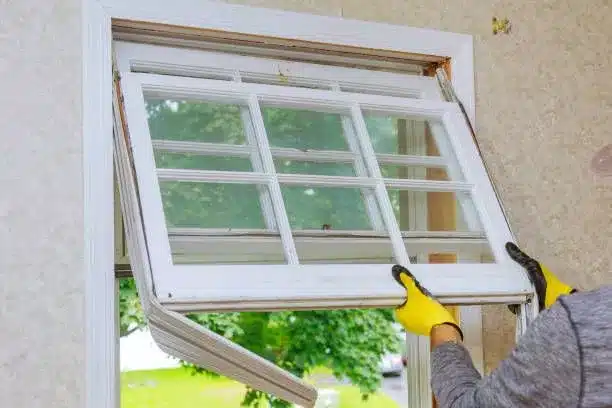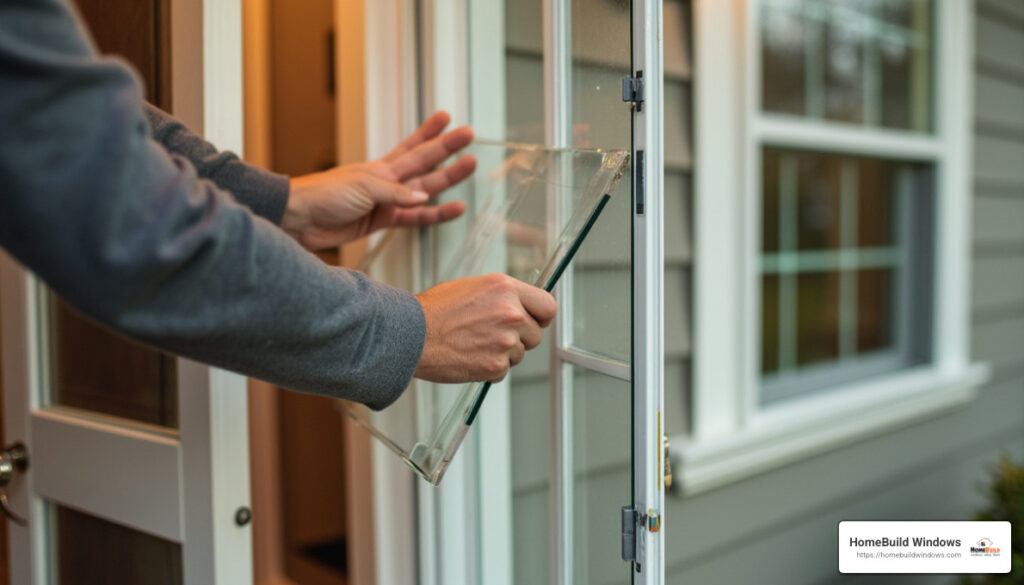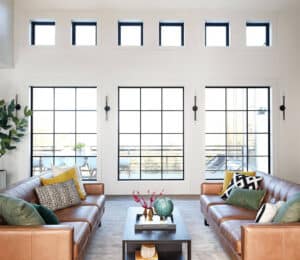Home window replacement is a big investment. Choosing the right windows, ordering them and then hiring a professional window installer that will do the job right can be a nightmare. However, it’s usually something that can’t be put off. We usually replace windows for several reasons. One of them is improving the building’s appearance. Another is to provide better ventilation of the interiors. However, most often the main reason for replacing windows is to protect the interior against excessive losses of warm air, which is associated with significantly higher heating bills and all-round discomfort. Leaky windows can cause up to 30 per cent heat loss. Replacing windows is also necessary when they’re simply old and damaged. Because the whole process may give you a headache, here are some tips that will help you get started.
Contact a Professional Window Company In Chicago or Visit A Showroom
It is worth starting with contacting a professional Chicago windows replacement company or visiting a window showroom, where you will be able to see individual models of windows, with different opening options and made of various materials, which will allow you to initially get an idea of the manufacturers’ offer. We encourage you to give us a call at Home Build and talk to a certified pella window installer, who will answer all of your questions and give you an estimate on any windows. Home Build has been in the window, door and siding market for over 15 years and we’ve built up a wealth of knowledge, experience, and a professionally trained team during this time. Thanks to our vast expertise and years of experience, we perform home window replacements in a manner that is affordable to you – no matter what your budget is. Our team works to replace windows in homes and businesses all across the Chicagoland area. This includes new construction installations, repairs, replacements, and all other window-related services. We complete our work in an efficient manner, ensuring a hassle-free service, so you can spend your time on more important things.

What should you pay special attention to when choosing replacement windows?
Each manufacturer must define certain parameters of the windows that inform about their functionality. The most important ones to look at are:
- Heat transfer coefficient – or the U-value. This indicator determines the level of thermal insulation. The lower the parameter value, the better. Windows with a U-value coefficient ranging from 0.20 to 1.20 is standard.
- The Sound Transmission Class (STC) – marked with the letter R. The higher the parameter value, the better the soundproofing properties of the window. The standard value is 32 dB. So a window with an R value of 32 dB should reduce a 50 dB outside traffic noise level to 18 dB.
- Low-E Coating, or low-emissivity coating. This is a transparent glass coating that was created to minimize the amount of infrared and ultraviolet light that comes through, yet while still letting light in. Low-E glass windows have a microscopically thin coating applied to the outside (or inside for colder climates) glass that is transparent and reflects the sun’s heat out.
The aesthetics of windows is important, but their functionality determines our comfort. When choosing new windows, pay special attention to selecting the correct size. Remember that you should measure the window opening, not the old windows themselves – especially if they caused any problems because the source of any problems could have been the incorrect size of windows. The colors and materials (wood, PVC, aluminum) do not affect the functional properties of the window – so their selection depends on our taste and available budget. However, it is worth trying to choose windows that will match the entrance door and the overall appearance of the home’s exterior.
Window Replacement – Choice of Material
Wood
Wooden windows are generally made of solid pine, spruce, larch, oak, meranti or mahogany wood. The frames are finished with water-soluble paints or varnishes, which have opaque or transparent coatings (the grain of the wood can be seen through). Windows of an unusual shape, e.g. arched, are more often made of this material.
It is worth remembering that such products require sanding and repainting every few years, but in case of minor damages and scratches to the frame – they can be repaired. In houses built in a wooden structure system, wooden windows are an obvious choice. Wooden window models are, unfortunately, much more expensive than plastic ones.
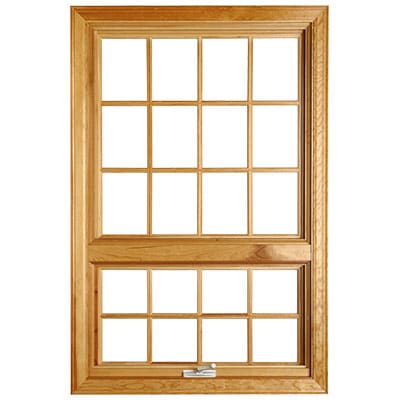
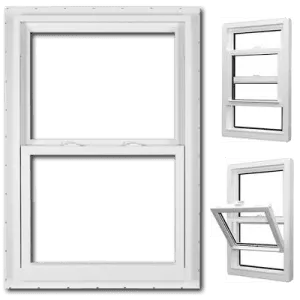
Vinyl (PVC)
Many manufacturers weld plastic windows from ready-made profiles, supplementing them with fittings and glass sets. The profiles are reinforced with steel or aluminum sections, which improve their strength and stiffness, but worsen thermal insulation (that is why some manufacturers replace them with composite spacers.)
PVC profiles are the cheapest, they are not suitable for very large glass, but they work well in rooms with high humidity – in kitchens, bathrooms, laundry rooms. They do not require maintenance, but when scratched, they cannot be repaired. The cheapest are white frames, however profiles imitating several types of wood and colored ones (e.g. graphite) are also popular.
Aluminum
Aluminum profiles are very rigid (stable), which is why they are most often used for large windows spaces, including corner windows, whole facades and conservatories. The widest ones allow the construction of movable wings weighing up to 550 lbs in the sliding option, and 880 lbs in the awning option. Aluminum frames can come in a variety of shapes and colors. Profiles can be anodized or powder coated in any color, they can also be finished with wood-like veneer. Such frames are resistant to external conditions, and virtually require no maintenance.
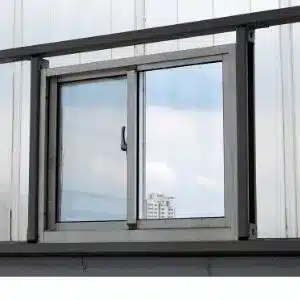
Window Installation – Window Types
The method and direction of opening windows has a great impact on the comfort of their use and the aesthetics of the interior. Here are some most common window operating mechanisms:
- Single-hung: Feature two sashes in a single frame, however, a single-hung window has only one operable lower sash.
- Double-hung: In double-hung windows, both sashes slide up and down allowing for ventilation on the top, bottom or both.
- Casement: They’re hinged one side like a door, this window opens from the side outward.
- Sliding: Sliding windows glide horizontally over a fixed sash. They have two or three sashes, depending on the manufacturer, where either one or two of them slide to open.
- Awning: These windows have top hinges and can be pushed open and pulled closed with a handle at the bottom. They naturally shed water, so it’s possible to keep them open during rain.
- Hopper: Can be described as awning windows operating in reverse. Hopper windows are bottom-hinged and open inward at the top. They’re typically used in basements or bathrooms and allow ventilation of the interior.
- Clerestory: Large windows or a series of smaller windows along the top of the building’s wall. They are designed to allow light into large spaces, such as train stations or warehouses.
- Arched: Also known as radius windows, where the bottom half is shaped like a rectangle, and the top is an arch. These types of windows are usually not operable.
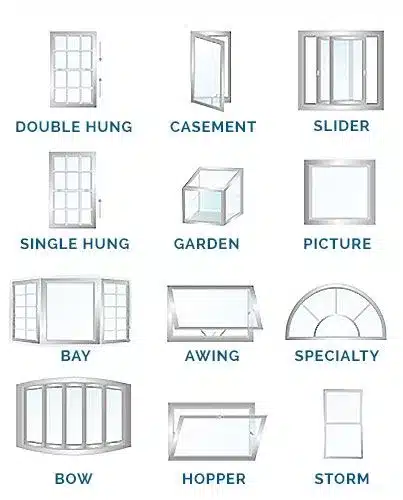
Window Installation Chicago
Call HomeBuild-Windows, Siding and Doors today and talk to professional window replacement contractors, who will answer all of your questions.
Our specially qualified team can discuss your window replacement and available payment options, so you can get an accurate quote. When installing or replacing windows we use cutting edge technology so that your windows not only look great but also provide an excellent shield for your home.

